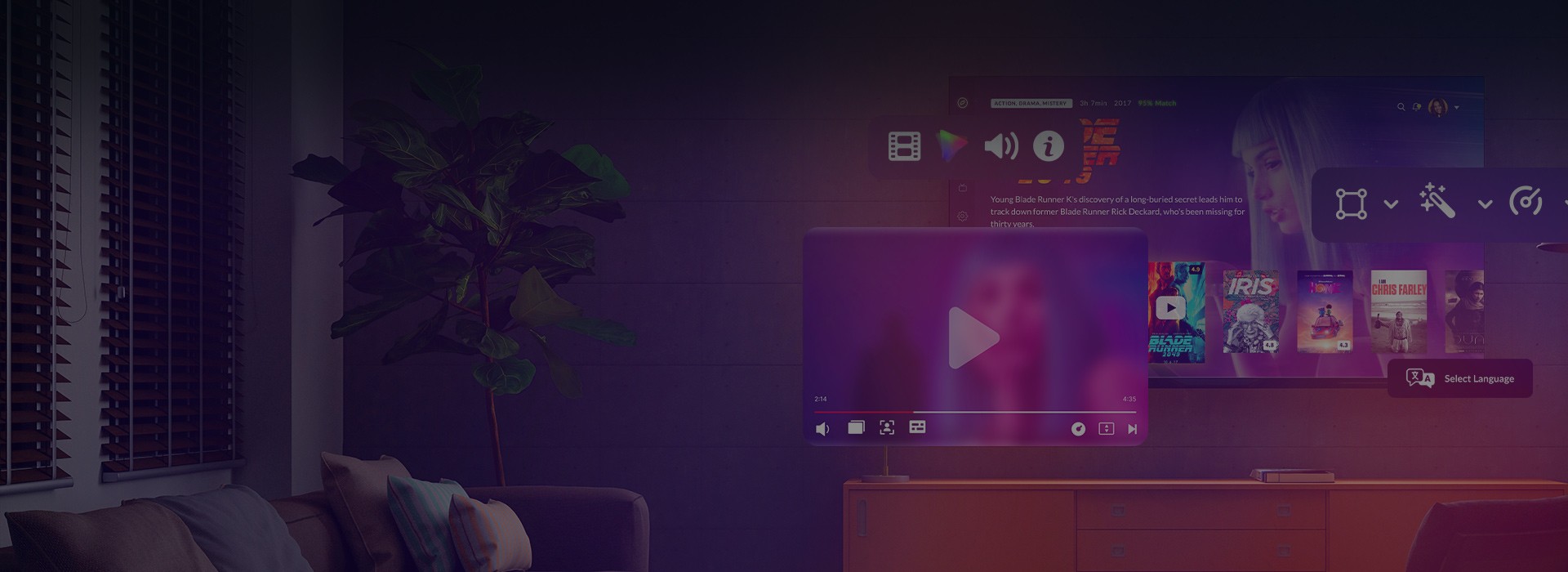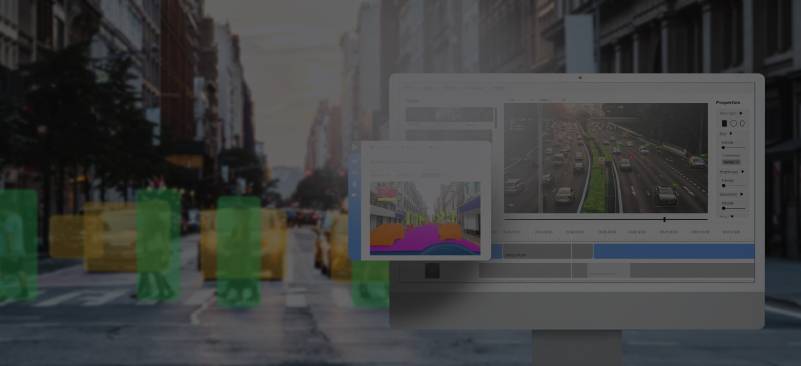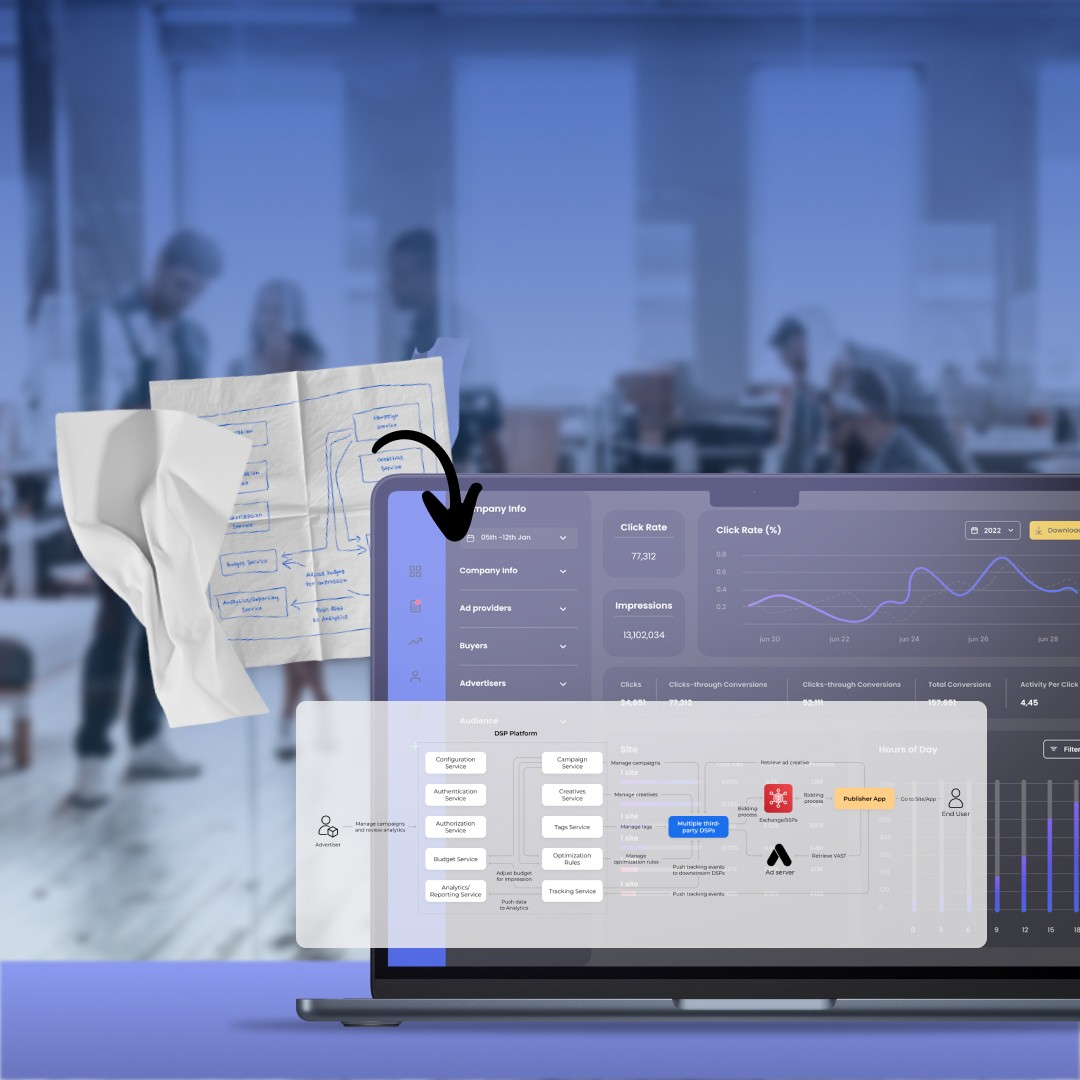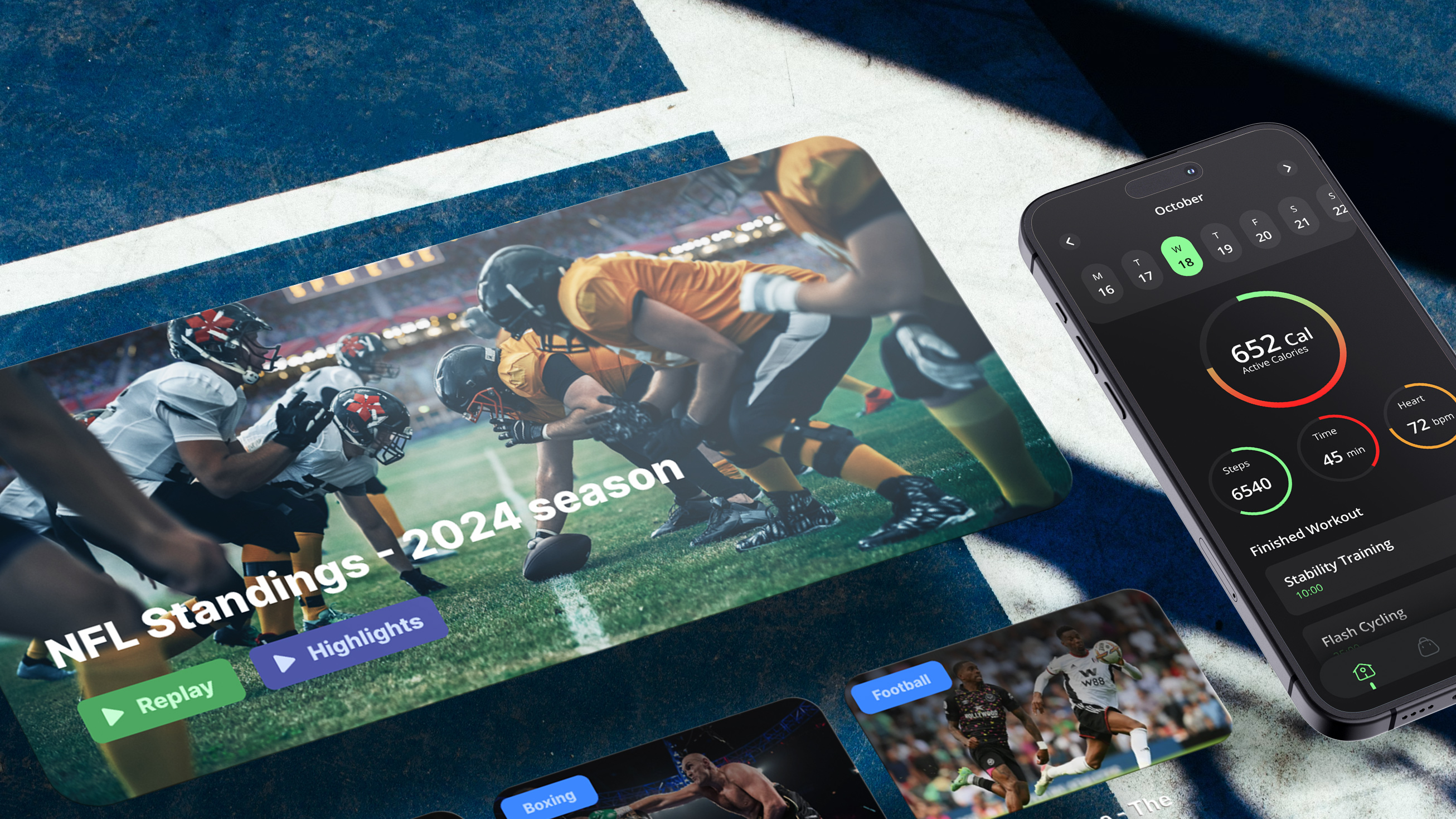Video has huge business potential — and you’re probably already using it to inform, engage, or promote. But if you’re relying on platforms like YouTube, Vimeo, or basic embedded players, you’re not getting the most out of it. These third-party solutions don’t give you real control over things like user data, monetization, or playback quality — all the things that keep viewers coming back and paying for your service.
OTT changes the game. Think of it as building your own digital broadcast network — where you own the content, the experience, and the results.
In this guide, we’ll show you how to build it right — and turn video into a powerful growth driver for your business.
OTT: meaning & key features
Let’s start with the basics to make sure we’re on the same page in the ever-evolving world of video technologies. What does OTT stand for? OTT, or over-the-top, refers to delivering video and media content directly over the internet — bypassing traditional cable, satellite, or broadcast TV infrastructure. Think Netflix streaming to your smart TV or YouTube on your phone — no set-top boxes, no traditional cable packages, just on-demand content at your fingertips.
What is OTT content? It is defined by a few characteristics:
- It runs on the open internet, not locked into a cable company’s private network like IPTV.
- You can watch it anywhere. Smart TVs, phones, tablets, game consoles, you name it.
- It can be on-demand or live — from Netflix binge sessions to live sports on Peacock.
- You control it: your app, your subscriptions, your ads, your data.
- No middlemen — you don’t need a cable company to reach your audience anymore.
Sure, the first examples that come to mind are Netflix, Amazon Prime Video, Disney+, and Hulu. But in fact, OTT isn’t just about entertainment giants.
Every year, more niche services (sports, education, gaming, news) launch OTT platforms to engage audiences directly and open new revenue streams.
- Sports. ALT Sports Data created an OTT platform to stream niche sports like Formula 1 and the X Games, allowing them to reach new audiences without relying on traditional TV. Now, they make money through subscriptions and pay-per-view. By partnering with Formula 1, they also offer real-time betting data, unlocking new revenue through in-play betting and boosting fan engagement.
- Education. Lingopie is a subscription-based OTT platform that turns language learning into a fun, interactive experience. Launched in 2018, it transforms TV shows and movies into lessons by adding dual subtitles, clickable words that generate flashcards, and gamified quizzes. As of 2024, Lingopie’s estimated annual revenue is approximately $8.9 million. The platform’s monetization primarily revolves around subscription-based models.
- News. In 2025, CNN launched a $3.99/month streaming service to reach younger viewers who prefer online news over cable TV. Backed by a $70M investment from Warner Bros. Discovery, the move aims to grow digital revenue to $1B by 2030.
Traditional telecoms are also shifting to OTT. Comcast, for example, began integrating cable TV with internet services back in 2011. This move allowed them to offer diverse viewing experiences from a single provider. Over the years, they’ve introduced new streaming services and features, including a mobile app and voice remote. In 2024, Comcast launched its Cloud TV platform — a complete OTT solution that eliminates the need for traditional cable infrastructure.
You’re probably wondering, “We already deliver video online — so are we OTT?” In the next section, we’ll break down the key technologies behind OTT and explain what makes it different from regular video delivery.
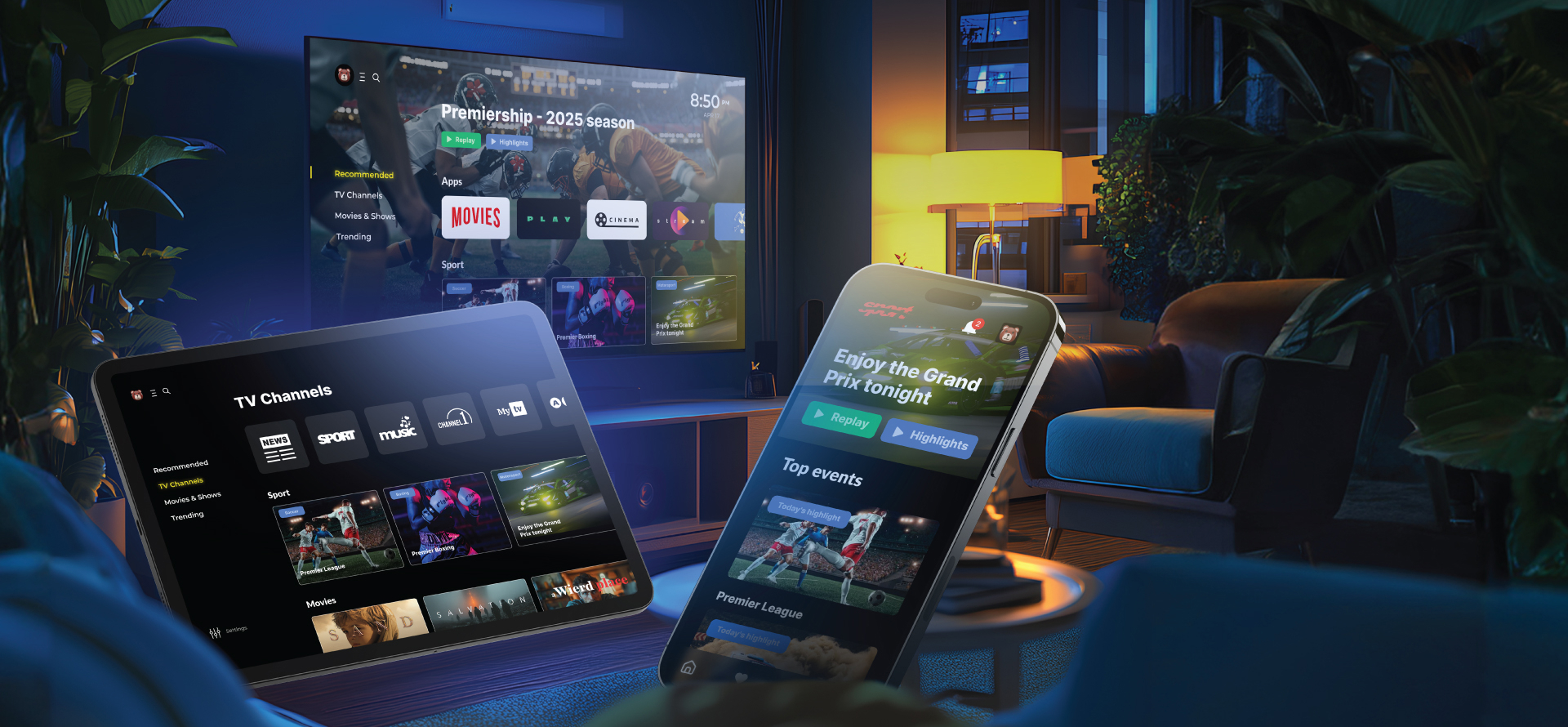
How does OTT work?
Behind every successful OTT streaming is the seamless coordination of numerous critical components. Here’s their quick overview:
- Content ingestion. Getting your media into the system is not just “upload and forget” — you need workflows that handle live feeds, massive video libraries, last-minute updates, and even user-generated content if you scale.
- Transcoding and encoding. Your viewers expect instant, flawless playback — on any device, any connection. That means you must transcode into multiple resolutions and formats right out of the gate. Poor encoding = buffering, angry users, churn.
- Content Delivery Network (CDN). A solid CDN caches your content close to viewers, whether they’re in New York or Nairobi. If you don’t invest in this now, you’ll pay later — slow loads kill engagement and ad revenue.
- Digital Rights Management (DRM). Content security is essential — especially if you’re working with premium content or licensing deals. Robust DRM keeps you compliant, protects your catalog, and reassures partners you’re serious about IP protection.
- Playback technology. The player is your frontline. It’s not just about “does it play.” It’s about low startup time, adaptive streaming, subtitles, ad insertion, offline downloads — and no weird crashes that drive people to competitors. The player experience is the product experience.
- Analytics and monetization tools. You need to track how people watch, where they drop off, what content drives signups — and then feed that into your ad tech, subscription offers, or upsells.
As you see, OTT isn’t just uploading a video to your site. It’s a full system — with smart delivery, security, monetization, and data tracking all working behind the scenes. You’re not just showing video — you’re running your own content platform, built to perform and grow.
Why OTT = Big wins for your business
- Go global — no cable operators or legacy broadcasters holding you back.
- Monetize your way — ads, subscriptions, pay-per-view, or all three.
- Own the data — direct connection to your audience, no middlemen.
How does OTT differ from CTV and IPTV?

It’s easy to get tangled up in acronyms: OTT, CTV, IPTV… So, what’s the real difference?
- OTT. Content delivered via open internet, accessible on any device with an internet connection (smartphones, smart TVs, tablets, etc.). No dependence on telecom or cable operators.
- CTV (Connected TV). Think of CTV as a device category inside OTT. It’s OTT content, but watched specifically on a big screen — like a Smart TV, a Roku box, or a PlayStation.
- IPTV (Internet Protocol Television). This might look like OTT — but it’s not. It runs on closed, managed networks controlled by telecom operators. It’s still tied to contracts, bundles, and “walled gardens”, where a telecom provider controls everything.
What business opportunities does OTT unlock?
Launching an OTT platform is all about new ways to grow your business, engage your audience, and diversify revenue streams.
Here are some of the biggest opportunities:
New monetization models
OTT platforms offer incredible flexibility in how you earn revenue:
- AVOD (advertising-based video on demand). Like YouTube, but with more control. You serve ads on free content and keep a larger share of ad revenue and data.
- SVOD (subscription video on demand). Users pay a recurring fee for unlimited access to your content, like Netflix. This model works well for offering consistent, high-demand content.
- TVOD (transactional video on demand). Pay-per-view for special events or premium content. Perfect for unique, one-time access like live sports or exclusive releases.
- Hybrid Models. Combine subscription and ad models to maximize both reach and revenue. For example, offer free ad-supported content alongside a subscription for ad-free, premium content.
Smart platforms often start with one model and evolve based on user behavior. For example, a sports streaming service might offer highlight reels with ads (AVOD), full match replays behind a subscription (SVOD), and pay-per-view for special events (TVOD). Over time, they can mix ads and subscriptions for different content — like ad-supported replays and premium live streams. This flexibility helps adjust revenue streams to fit what their audience wants.
Direct audience relationships
OTT gives you full ownership of the user journey — from signup to content engagement — all through your own app or site. Built-in analytics let you track what people watch, when, and how they interact, with no middlemen or guesswork.
Just like Netflix or Disney+, you get rich, real-time data that helps you:
- Understand what works. By tracking which content is watched, when, and for how long, you can uncover trends and preferences — for example, understanding which sports events generate the most engagement and adjusting your content offering accordingly.
- Personalize experiences. Using this data, you can offer tailored recommendations — like suggesting a specific game replay or exclusive interview based on a user’s past viewing habits.
- Promote smarter. For example, if a user regularly watches basketball, you can promote a pay-per-view NBA game or a subscription package tailored to their interest in sports content.
- Win users back. By tracking when users become inactive, you can send personalized emails or offers (like a discount on a subscription) to bring them back.
Global reach
The beauty of OTT is its borderless nature — you can reach viewers anywhere.
If you want to scale your OTT platform globally, there are three main elements you’ll need to focus on:
The first is infrastructure needed to support global operations:
- Multi-language support. For subtitles, dubbing, or interface translation to cater to diverse audiences.
- Flexible billing. A system that can handle different currencies, regional payment methods, and localized pricing.
- Regional compliance. Adhering to local laws and regulations (like GDPR in Europe, or data sovereignty laws in other regions).
The second is having the right CDN partner with servers in your key regions (e.g., AWS, Akamai, or Cloudflare). This reduces latency, improves video quality, and minimizes buffering for viewers.
The third is smart content protection:
- DRM (digital rights management) tools. They protect your content from piracy or unauthorized access.
- Geo-blocking. This restricts content access to specific regions based on licensing agreements or regulations.
While OTT enables global expansion, managing the logistics is key. The right partner skilled in video OTT solutions will streamline content delivery, ensure scalability, and keep you compliant with regional laws.
Launch new brands or channels faster
With OTT, launching new channels or brands is faster and simpler. Thanks to cloud technology, you can add new content — such as a kids’ section or an eSports channel — in just weeks instead of months. Plus, flexible monetization and global reach let you test, scale, and adapt quickly to audience needs, all without a major upfront investment.
Challenges and complexities of building an OTT platform
OTT opens massive opportunities — but building and running a successful platform isn’t quick or easy.
Here’s where most companies hit roadblocks:
Device and platform fragmentation
Your audience is spread across Android phones, iPhones, Smart TVs, Fire TV sticks, gaming consoles, and more. Each device — even different model years of the same Smart TV brand — behaves differently.
Managing and updating apps across all of them takes serious effort. That’s where the right tech partner helps.
Take our work for a global online video platform provider serving telco clients. They needed a white-label OTT solution that could scale fast across 13 platforms and 25 devices. Here’s what Oxagile did: we focused on maximum code reuse. We built a modular, cross-platform architecture with a single, shared business logic layer and You.i Engine for unified UI rendering. This approach allowed us to reuse the code across platforms, cut dev and maintenance costs, and launch branded apps faster.
The client got a fully branded, telco-ready streaming solution that’s already live in two European countries — and scaling fast.
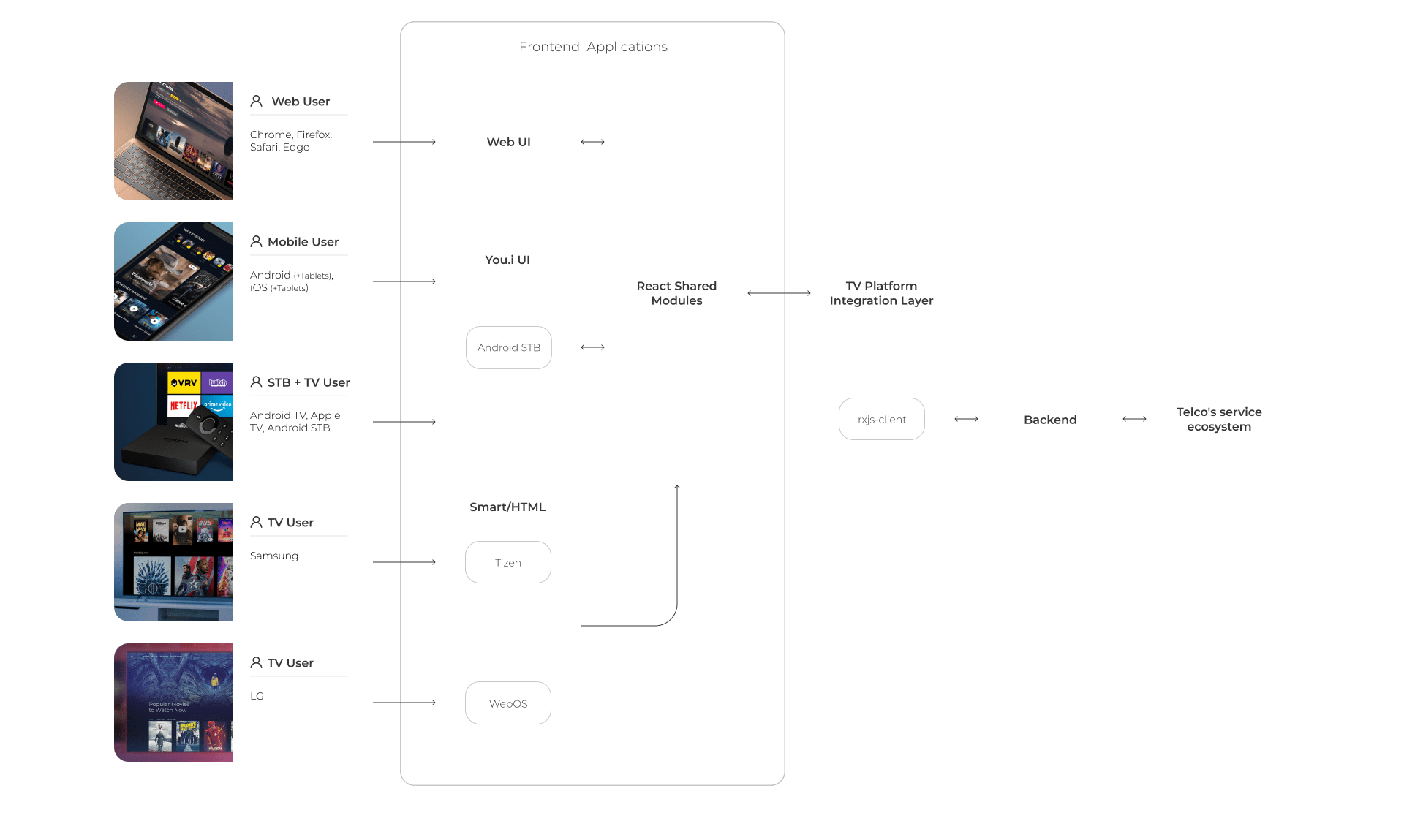
Content delivery and quality of experience (QoE)
In OTT, QoE is everything. Buffering, lag, and inconsistent video quality are the top reasons users churn. They expect instant startup, smooth playback, and adaptive quality, even on weak networks.
But here’s the reality: there is no one-size-fits-all solution to deliver flawless performance. Geography, content type, audience behavior — all affect what “great performance” looks like.
That’s why we don’t prescribe off-the-shelf solutions blindly. Instead, we start with OTT consulting services to develop content delivery strategies for your unique project.
What do we look at first?
- Viewer geography. Where are your users located? A platform targeting Southeast Asia faces different CDN demands than one in North America. For a global scale, we often recommend multi-CDN strategies using providers like Amazon CloudFront (400+ edge servers across 47 different countries) or Akamai (350,000+ servers across 130+ countries). This helps keep servers close to users — cutting lag, startup time, and buffering.
- Content type: live vs. VOD. Live streaming and VOD have different needs. Live streams need low-latency protocols and real-time CDN failover — so if CDN A drops, your user seamlessly switches to CDN B. For VOD, we use adaptive playback, pre-buffering, and techniques like episode preloading (think Netflix’s next-episode strategy).
- Network conditions. Not all users have strong internet connections. We implement adaptive bitrate streaming that adjusts resolution mid-play. We also tune segment sizes: shorter chunks reduce delay (ideal for live sports), longer ones improve stability (good for on-demand movies).
Content protection and compliance

Piracy is a constant threat to OTT platforms. And DRM is the first line of defense. It encrypts your video files during the packaging stage. When a user hits play, their device sends a license request to a DRM license server. If the user is authorized, the server sends back a decryption key, allowing playback.
Most platforms use multi-DRM setups — like Google Widevine, Apple FairPlay, and Microsoft PlayReady — to make sure content is protected across all devices and browsers.
Other elements of a content protection and compliance system include:
- Token-based authentication. It gives each viewer a temporary, time-limited pass to watch content. This tech helps block people from reusing someone else’s login and stops bots from hammering your platform with stolen credentials.
- Watermarking. Dynamic watermarking adds a hidden mark to each video stream. If someone leaks the content, you can trace exactly where it came from.
- Geo-blocking and regulatory compliance. Geo-blocking makes sure your content only plays in approved regions. This allows you to follow rules like GDPR and COPPA and keep your platform and users legally safe.
Analytics and optimization
Owning your OTT platform means full control — but you can’t control what you don’t measure. Built-in analytics give your team the real-time data you need to spot drop-offs, optimize content, and grow revenue.
From our experience building white-label OTT platforms, there are three main ways to integrate analytics, each fitting a different stage of product maturity and business need:
- Off-the-shelf platforms (GA4, Mixpanel, Firebase, Amplitude). Fast to integrate, ideal for MVPs or early-stage products where speed matters more than precision. They cover basic user flows and retention metrics but lack playback-specific data and deep session granularity.
- Video-centric analytics (Conviva, Sentry). These tools provide deeper, playback-focused insights — buffering, bitrate shifts, playback failures — all critical for QoE monitoring and churn prevention. Strong fit for mature platforms focused on retention, uptime, and monetization. Downsides: vendor lock-in, cost, and heavier integration with your player stack.
- Custom analytics. Custom solutions collect exactly what you need, where you need it, in your own data lake or BI stack. Best for platforms operating at scale, needing compliance (e.g., GDPR, HIPAA), or unifying data from multiple systems (CDN, player, billing, CRM). Higher upfront investment but maximum flexibility and control.
Why choosing the right partner matters
The truth is, even big brands often underestimate the hidden complexity of OTT — until they’re knee-deep in tech debt, missed deadlines, or spiraling operational costs.
That’s where experience matters.
At Oxagile, we’ve seen it all over the last 20+ years — scaling platforms from thousands to millions of users, launching video streaming services across dozens of device types, and optimizing monetization strategies across AVOD, SVOD, and hybrid models.
We’ve helped companies across industries — from entertainment giants to niche innovators — build and optimize OTT platforms that perform. Want to assess your OTT readiness or get expert advice?
Let’s start with a conversation.

